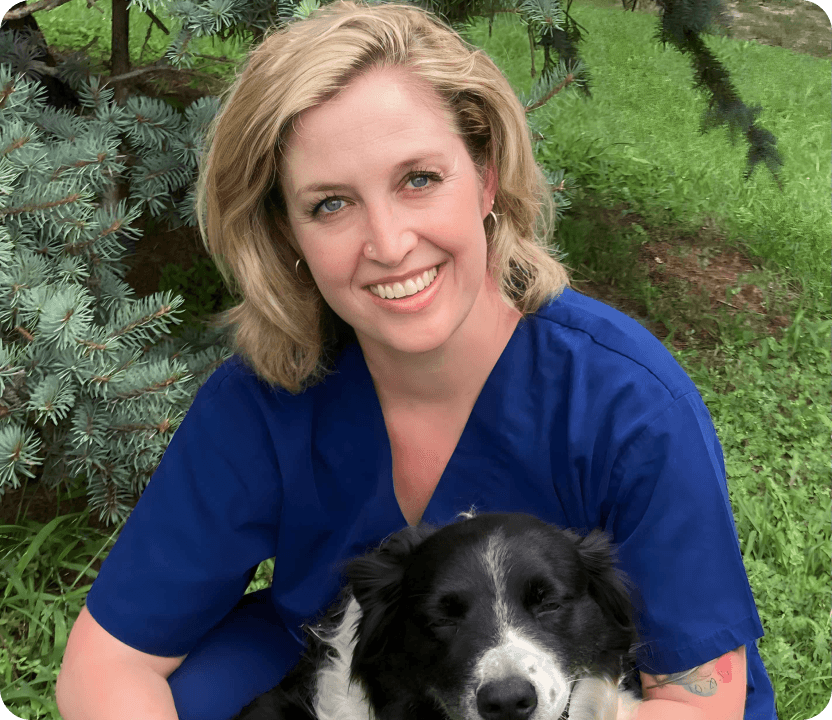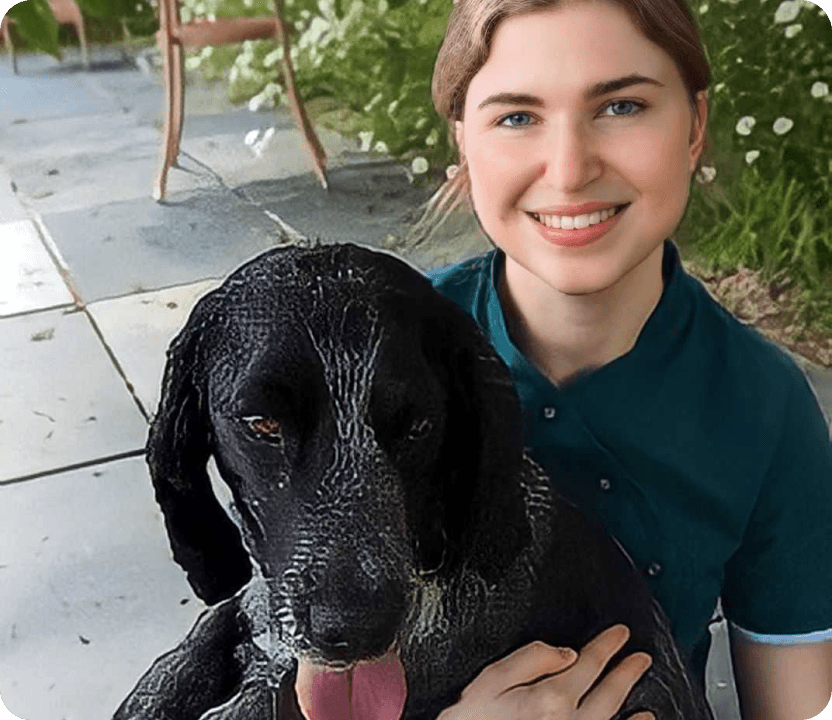If your dog is dealing with itchy, red, and irritated paws and won’t stop licking or chewing a paw yeast infection could be to blame. Learn the causes, symptoms, and how to help.
- Home/
- Dog/
- Health & Wellness/
- Understanding Dog Paw Yeast Infections: Causes, Symptoms, and Treatments
Understanding Dog Paw Yeast Infections: Causes, Symptoms, and Treatments
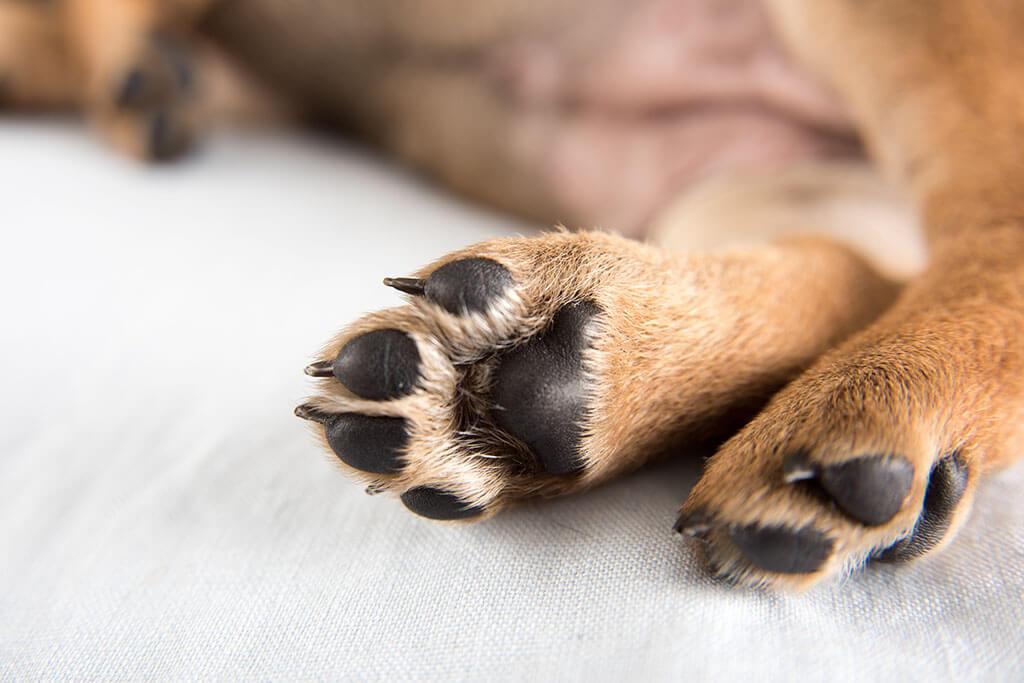
Are you worried that your dog might have a yeast infection in their paw? A yeast infection in a dog’s paw can be a bothersome and uncomfortable condition.
Fortunately, these types of infections are fairly easy to detect and respond well to treatment if caught early. The key to catching them early is knowing what to look for.
In this article, we’ll explore the causes, symptoms, diagnosis, and treatment options for these infections. By gaining a comprehensive understanding of paw yeast infections, you’ll be equipped to provide your canine companion with the care and attention they need.
Key facts:
- Dog paw yeast infections are most often caused by an overgrowth of the yeast species Malassezia pachydermatis.
- Allergies are the most common underlying reason why dogs get yeast infections on their paws.
- Common signs of paw yeast infections include paw licking due to persistent itching, redness, unpleasant odor, and hair loss.
- Medicated shampoos are used to treat mild-to-moderate paw yeast infections.
- Severe paw yeast infections may require several months of treatment with oral antifungal medications.
- Preventive measures such as proper paw hygiene, underlying allergy management, immune system support, and regular veterinary check-ups can help target paw yeast infections and reduce the risk of recurrence.
What Is a Dog Paw Yeast Infection?
A dog paw yeast infection, also called yeast dermatitis, is a fungal infection caused by an overgrowth of yeast on the skin of a dog’s paw or paws. The culprit is usually Malassezia pachydermatis, a yeast species that is normally found in small numbers on the healthy skin of most animals.
However, when conditions are right, the yeast can begin to overgrow. This overgrowth of yeast results in an infection that can cause skin irritation, itching, inflammation, redness, and a bad odor. It can also affect the dog’s nails and cause them to become brittle or discolored.
Areas of Yeast Overgrowth on a Dog’s Paws
Yeast likes to grow in warm, moist environments. It is also more likely to cause a skin infection when the surface of the skin is damaged or there is added moisture from sweat, saliva, or frequent contact with water.
Because of this, we typically see yeast infections on three main areas of a dog’s paws:
Between their toes. The skin between a dog’s toes is warm and moist, making it the ideal environment for yeast overgrowth.
On their paw pads. If you look at the bottom of a dog’s foot and see redness and notice a foul odor, your dog might be dealing with a paw pad yeast infection. Our pups are likely to lick or bite at this area if they feel itching or discomfort, which can make yeast infections worse.
In their nail beds. A dog nail bed yeast infection happens when excess moisture gets trapped in and around a dog’s nail bed. Pet parents may notice a brown discharge near a dog’s nail bed along with redness and swelling.
What Causes Yeast Infections on a Dog’s Paw?
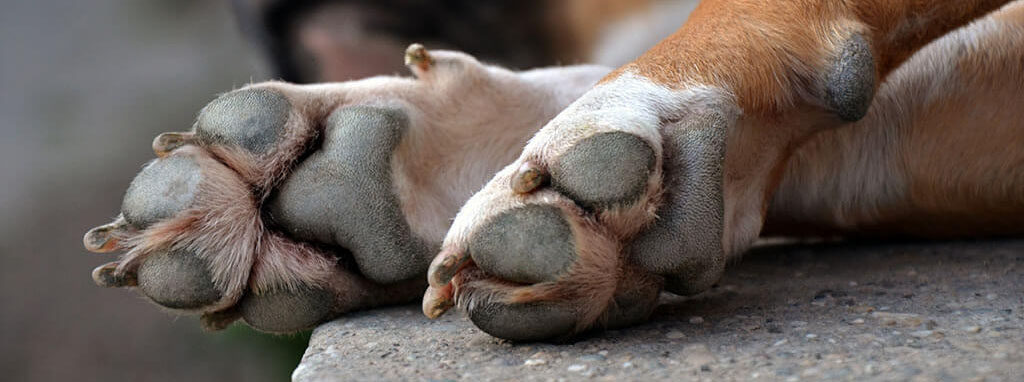
Yeast likes to grow in warm, moist environments such as the space between a dog’s toes. It is also more likely to cause a skin infection when the surface of the skin is damaged, or added moisture from sweat, saliva, or frequent contact with water is present. A combination of these factors creates the perfect situation for the yeast to invade the skin and rapidly multiply.
Several known predisposing factors can lead to a yeast infection in dog paws:
- Allergies: Allergies are the most common cause of yeast infections on dogs’ paws. Allergies can weaken the skin barrier, making the dog more susceptible to infections. They also cause itchy skin which leads to scratching and licking; these damage the skin and make them more likely to develop yeast infections.
- Medications: Certain medications, such as antibiotics and steroids, can lead to paw yeast infections in dogs. Antibiotics can disrupt the natural microbial balance of the skin by killing beneficial bacteria, allowing yeast to proliferate. Steroids can suppress the immune system, making dogs more susceptible to yeast overgrowth.
- A Weakened Immune System: Dogs with a weakened immune system – due to illness or age – are more likely to develop paw-related yeast infections.
- Paw Coverings: If a dog’s paws are bandaged or covered with shoes or boots for an extended period of time, moisture can get trapped and yeast can multiply.
- Genetic Predisposition: Several dog breeds are known to be more susceptible to skin yeast infections, including the Basset Hound, Boxer, Cavalier King Charles Spaniel, Cocker Spaniel, Dachshund, German Shepherd, Poodle, Shih Tzu and West Highland White Terrier breeds.
While these factors can increase a dog’s likelihood of developing a paw yeast infection, they do not guarantee that every dog will develop one. Other factors such as environmental conditions and overall health also influence the occurrence of yeast infections in dogs.

Identifying Dog Paw Yeast Infections: Signs and Symptoms
Yeast infections on a dog’s paws can range from mild to severe. Fortunately, it is usually easy to tell if a dog has a yeast infection if you know what to look for.
Dog owners should watch for the following signs and symptoms that may indicate a paw yeast infection in their dogs:
- Paw licking and chewing: Dogs that frequently lick or chew their paws may be trying to alleviate the intense itching and discomfort caused by a yeast infection.
- Redness and inflammation: The affected paw or paws may appear red, swollen, or inflamed. The skin may also feel warm to the touch.
- Unpleasant odor: Yeast infections often have a noticeable, unpleasant odor. Dog owners may notice that their paws smell musty, “yeasty”, or even “cheesy”.
- Discharge or sores: There may be a discharge present or sores between the toes or around the edges of the paw pads. These may appear as small bumps, open sores, or scaly patches.
- Changes in paw appearance: The affected paw may have flaky, crusty or thickened skin, and a greasy texture or appearance.
- Limping or reluctance to walk: Severe paw yeast infections can be painful, which may cause the dog to limp on the affected paw or become reluctant to stand or walk on it.
- Hair loss: Hair loss may occur in the areas surrounding the yeast infection. The affected skin may appear bald or have patches of missing fur.
These signs and symptoms can vary depending on the individual dog and the stage of the infection. If dog owners suspect a paw yeast infection, they should consult with a veterinarian for a proper diagnosis.
Dog Paw Yeast Infection Pictures
These images show what dog paw yeast infections can look like on real-life dogs. If you suspect your dog has issues with their paws or skin health, please make sure to contact your veterinarian.




Treatments for Dog Paw Yeast Infections
There are different methods of treating yeast infections in dogs. The most commonly used treatments are topical medications, which are products that are applied directly to the affected skin and paws. Oral medications are also available and are typically used in more severe cases.
Topical medications
Topical medications can be used to treat mild-to-moderate paw yeast infections. These products are generally in the form of creams, ointments, or medicated shampoos. Some topical treatments also have antibacterial properties to help treat secondary bacterial infections.
Before any form of topical medication can be applied, the affected area must first be thoroughly cleaned using a mild, pet-safe cleanser. This helps to remove accumulated grease, crusts, or other debris that may interfere with absorption of the topical medication.
Antifungal creams and ointments are generally used for small, localized areas such as between the toes or for a dog paw pad yeast infection. This makes it easy to consistently apply.
The disadvantage of topical creams and ointments is that dogs who are already licking their paws are very likely to lick off the medication. An Elizabethan collar (“cone”) or other similar physical barrier will likely be needed.
Medicated shampoos are the preferred treatment for most mild-to-moderate paw yeast infections. These shampoos are designed to be used on the entire body, but they can also be used on just the paws if that is the only affected area.
These shampoos usually contain antifungal ingredients and ingredients that help reduce scaling and crusting.
The shampoo is mixed with water, massaged into the dogs’ paws until fully lathered, and then left on for 3 to 5 minutes before being completely rinsed off and the paws dried. This can be repeated 3 times a week for a minimum of four weeks, or as long as it takes to resolve the infection.
Oral medications
Veterinarians generally prescribe oral antifungal medications for severe cases of yeast infections, or when cases do not respond to topical treatments.
Oral medications include prescription drugs such as itraconazole and fluconazole. These medications are often given for several weeks to months before the yeast infection is completely under control.
Like any medication, oral antifungal treatments may have side effects. Due to the potential side effects, especially those related to liver function, dogs receiving oral antifungal treatments need to be closely monitored with regular blood tests.
Other treatments
In addition to medications to treat the yeast infection, your veterinarian may recommend treatments to address any underlying causes contributing to the infection. This will improve treatment success as well as helping to prevent recurrent infections.
Additional treatments may include:
- Antibiotics to treat secondary bacterial infections.
- Allergy management through dietary changes, environmental modifications and medication if needed.
- Immune system support using supplements such as probiotics or omega-3 fatty acids.
- Targeted treatment for underlying medical conditions like hormonal imbalances or autoimmune disorders.
- Maintaining proper paw hygiene to prevent yeast overgrowth.
Do Dogs Usually Respond Well to Treatment?
A dog’s paws generally respond well to treatment for a yeast infection when diagnosed and addressed early. Dogs with severe infections or underlying conditions may require several months of treatment before the infection is eliminated.
In order to ensure the best possible outcome and reduce the risk of recurrence, follow the veterinarian’s instructions for treatment, complete the full course of medication, and maintain proper paw hygiene.
Regular monitoring and follow-up with the veterinarian are also essential to assess the dog’s response to treatment and make any necessary adjustments to ensure complete resolution of the infection.
Home Remedies for Paw Yeast Infections
Your veterinarian is your best defense against yeast infections. The methods previously described – such as medicated shampoos, creams, and ointments – are the best way to treat your dog’s paw yeast infection. But what if you can’t get to a vet right away to buy those needed items?
There really is only one home remedy that is recognized as having any benefit for dog paw yeast infections. It is something you probably have in your pantry already: vinegar (white vinegar or apple cider vinegar will work).
Regular vinegar typically has a pH of 2.4, with a strength of 5 percent. When used as a paw soak, the vinegar temporarily decreases the pH of the skin of the paw which creates an environment where the yeast is unable to grow.
Dog Paw Soak for Yeast
To use a vinegar foot soak, mix a solution of 1 part vinegar to 2 parts water. Immerse your dog’s paw in the solution and let it soak for about 5 minutes. Remove the paw from the solution, and pat dry without rinsing.
There are few things you must remember about using a vinegar home remedy on your dog’s paws:
- Do not use a vinegar paw soak more than once a day.
- Always dilute the vinegar with water before use. A typical ratio is one part vinegar to two parts water. Using undiluted vinegar can irritate the dog’s paws or make the problem worse.
- Before applying the vinegar solution to all affected areas, test it on a small area of your dog’s paw to see if there is any adverse reaction. If irritation occurs, discontinue use, and consult your veterinarian.
- Do not use a vinegar paw soak if there are open sores on your dog’s paws, since vinegar is very painful on open wounds.
- Make sure to dry the paws thoroughly after the soak. Damp skin is what often leads to yeast infections in the first place.
- Discontinue the soaks if you notice increased redness, swelling or pain, and consult your vet as soon as possible.
- Limit the soaks to once a day and for no longer than five minutes at a time. Too much paw soaking can lead to other problems, like dryness and cracking of the paw pads.
Vinegar paw soaks should only be used as an interim measure until you can get your dog in to see the vet. Paw yeast infections usually have an underlying cause, and veterinary care is the best way to make sure that these conditions are properly addressed.
How to Prevent Paw Yeast Infections in Your Dog
While some dogs never experience yeast infections in their paws, others may have repeated infections. If your dog is prone to paw yeast infections, here are some steps you can take:
- Manage allergies. For dogs with underlying allergies, work with your veterinarian to identify and manage the allergies through dietary modifications, environmental controls, or appropriate medication.
- Keep paws clean and dry. Regularly clean and dry your dog’s paws, especially after walks or activities that expose them to moisture or dirt. Pay attention to the areas between the toes and paw pads.
- Trim dog paw hair. Trim the hair around your dog’s paws to prevent excessive moisture retention and the accumulation of debris that can contribute to yeast overgrowth.
- Feed a balanced diet. Feed your dog a balanced, high-quality diet that supports their overall health and immune system function.
- Consider your dog’s environment. Limit your dog’s exposure to excessively wet or humid environments and keep their bedding and living areas clean, dry, and well-ventilated. Avoid harsh chemicals when cleaning your dog’s living areas.
- See your vet regularly. Most importantly, regular veterinary check ups will help to identify new infections early when they are easiest to treat.
Final Words on Dog Paw Yeast Infections
Yeast infections on dogs’ paws can be a troublesome condition for both dogs and their owners. However, with proper understanding and timely intervention, these infections can be effectively managed and prevented.
If your dog is showing signs of a paw yeast infection, contact your veterinarian as soon as possible to discuss the best treatment options for your pet. With appropriate care and attention, you can help keep your dog’s paws healthy and free from infection.
Sources:
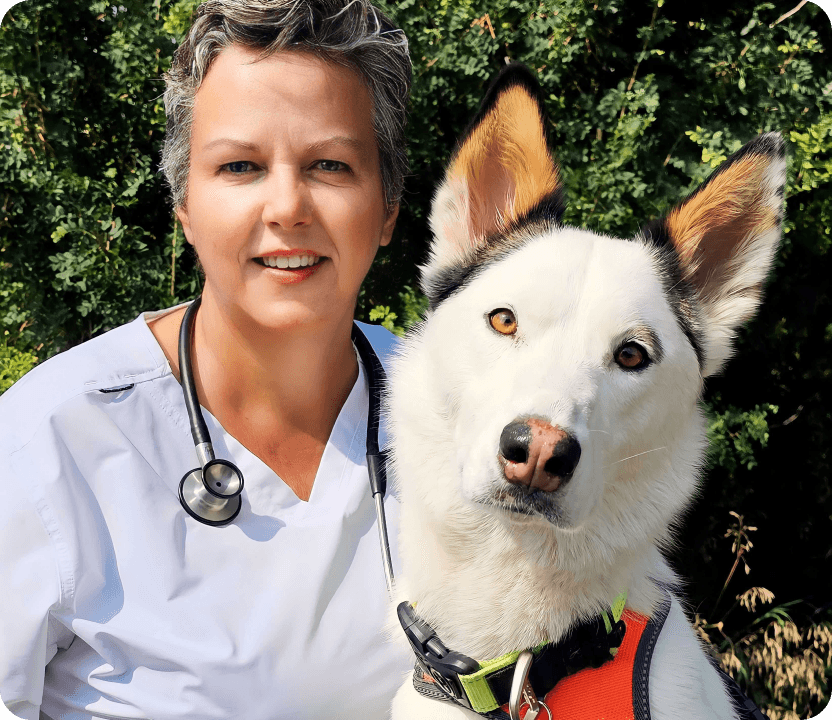 W
W